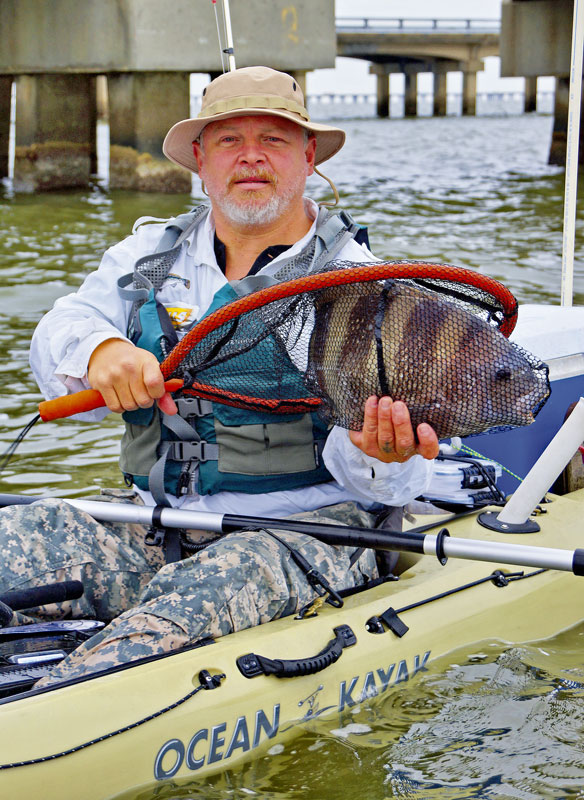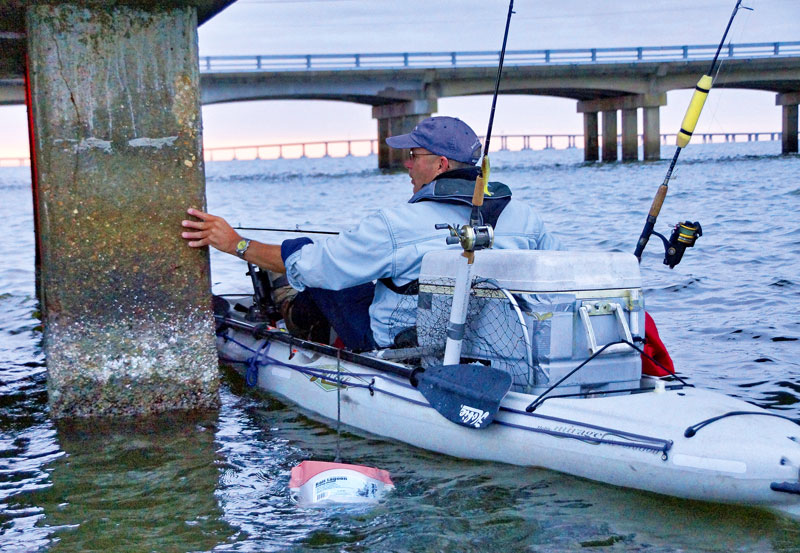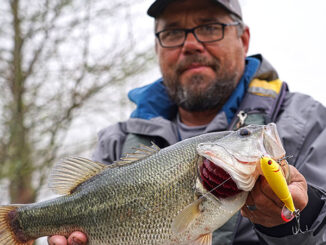
The most-underrated saltwater fish in Louisiana has to be the sheepshead. Even though they are hard fighters and provide delicious table fare, very few Louisiana fishermen target them. Have you ever seen anyone advertising a sheepshead charter?
The good news for kayak anglers is that they are readily accessible, eager to bite and provide consistent action during the winter when more popular species may get a bit picky.
Sheepshead are structure-oriented, and south Louisiana has an overabundance of great sheepshead habitat. Reefs, rock jetties, bridge and camp pilings abound. Look at it this way, the Lake Pontchartrain causeway alone provides about 50 miles of pilings between the north and south spans. Add in the I-10 twin spans, the Highway 11 bridge, the train trestles and the numerous natural and artificial reefs, and the lake’s sheepshead opportunities are nearly endless. This doesn’t even include all of the camp docks, piers, jetties and many other bridges across the coastal areas.
Kayaks are great platforms for fishing sheepshead close to and in these structures. They can be maneuvered under all areas of bridges to get at the exact point where the fish are holding. No super casting skills are necessary; all it usually takes is figuring out where they are on a particular day. Drop down a live or dead shrimp, and be ready for the strike.
Best bait
The best spots are usually on the downcurrent sides of pilings. Sheepshead hold where the piling breaks the current flow, laying in wait for a snack to wash around the piling. The slack water makes it easier to keep your bait tight to the piling and also helps better detect bites. However, before moving on, check all sides of the piling in case the fish are in a different mood that day.
Live shrimp are best but are sometimes unavailable in late winter. The next best thing is dead shrimp — either fresh or frozen. Sheepshead are notorious bait stealers. Due to their small mouths and ample dentures, they can clean a hook in a split second. Using small, strong hooks and smaller shrimp or shrimp pieces greatly increases the hook up ratio.
Sheepshead hold tight to any hard structure. In clear, winter water, you can usually see them rooting barnacles and other critters that cling to bridge pilings. In Florida, where they regularly target sheepshead, one particular trick is to chum them up by scraping the pilings. A small floor scraper on a wooden handle is run up and down the pilings just under the surface. This crushes the outer shell and releases the tiny animals inside. These bits drift in the current and attract fish to the area.
What you’ll need
Stout rods and heavy line help get quick control over these hard-fighting fish. Heavy braid and a fluorocarbon leader reduce abrasion, a constant issue when fishing close to these hard, sharp surfaces. Use heavy drag to quickly wrestle them out of the structure. Cut-offs are inevitable, but the quicker you can drag them away from the structure, the better chance of getting them in the kayak.
Boat positioning can be key. By sitting up tight to the down-current side of the piling, you can quickly drift or drag the fish backwards into the open water. If you fish a pedal-drive kayak with reverse, keep your feet ready to back away as soon as the fish is hooked. If you’re paddling or don’t have reverse, keep your paddle across your lap and get in a few quick strokes to get the yak moving away. Sheepshead fight more vertically than making horizontal runs. Therefore, you just need to get a short distance away from the structure to continue the fight.
A classic dropper rig where the hook sits a few inches above the sinker is all you need. Since you will be fishing the bottom, right in the structure, you are going to get snagged, but bottom rigs are simple and inexpensive to make. It is wise to make up a good supply ahead of time so you can quickly re-tie and get back to fishing in the event of a snag or cut-off. Another trick Florida guys use is to tie the section of the bottom rig that holds the sinker with lighter monofilament. The sinker is usually what gets snagged most often, and this allows for it to break free without losing the hook and rest of the rig. Simply tie on a new sinker and you’re back in business.
Maneuvering around
Fishing so tight to these pilings can be hard on a plastic boat. The barnacles and sharp, concrete edges act like a cheese grater and can quickly do a lot of damage. On calm days with light current, you can simply use your hand to keep the ‘yak from hitting the piling. Many bridge regulars use a variety of vinyl buoys, old life jackets, and even a short length of PVC pipe to craft bumpers along the side of the ’yak to prevent contact.

If fishing Ponchartrain, pay attention to weather. Skip days that have high winds and plan to fish according to the direction. Opt to launch on the calm side of the lake, depending on that day’s wind direction. On rough days, head into the inner canals and fish seawalls, piers and pilings.
Although you may be targeting sheepshead, the same techniques and locations also produce redfish and black drum.
A final tip learned from some old-timers. Sheepshead dorsal fins will absolutely destroy an ice chest — hard or soft. Carry a pair of small, cutting pliers and clip the spines off before putting the fish on ice. You’ll be glad you did.

